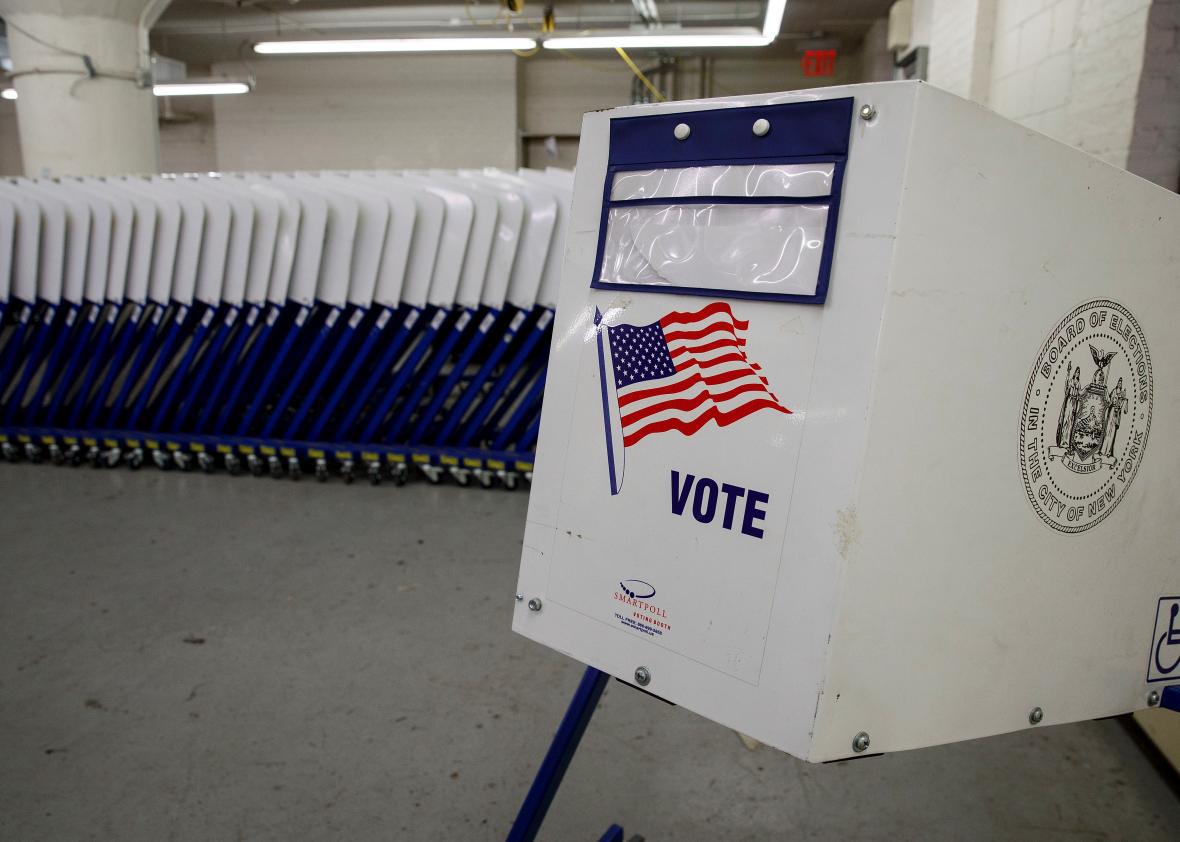Voting machines break and malfunction every election all across the country. This year is no different. It doesn’t mean the election is being hacked.
So far, voting machine problems have been reported in North Carolina, New York, Illinois, Kentucky, Texas, and Ohio. An early report said that laptops used to confirm voter registrations had malfunctioned in all 57 precincts in Durham County, North Carolina—a Democratic-leaning county in a crucial swing states. Naturally, a countywide outage in such an important area raised eyebrows, but as the Washington Post reported, the problem was later determined to have been on a much smaller scale: “Board of Elections spokeswoman Briana Kahn said the board received reports from ‘five or six’ precincts where the laptops were malfunctioning and decided to switch to paper poll books throughout the county ‘as a precaution.’ ”
After a series of high-profile hacks of political organizations this summer—in July, Russia hacked the emails of the Democratic National Convention, and in June hackers targeted voter-registration systems in Illinois and Arizona—it’s understandable that election boards and citizens alike are wary of an attempt to disrupt the presidential general election. And as the software firm Cylance showed last week, it’s possible to compromise and manipulate voting tallies on some machines. But experts say hacking election sites is easier said than done. Flashpoint, an intelligence firm, wrote in a blog post Monday:
The U.S. election landscape is made up of approximately 9,000 different state and local jurisdictions, providing a patchwork of laws, standards, processes, and voting machines. This environment is a formidable challenge to any actor—nation-state or not—who seeks to substantially influence or alter the outcome of an election. Doing so would require mastering a large number of these disparate cyber environments and finding a multitude of ways to manipulate them. An operation of this size would require vast resources over a multi-year period—an operation that would likely be detected and countered before it could come to fruition.
Still, election boards are taking precautions. According to Christian Science Monitor, “[Department of Homeland Security] officials say they’ve spoken to all 50 states about providing help with scanning their systems for risks and offering other services, but wouldn’t detail the assistance specific states had received.”
Of course, changing voting machine counts isn’t the only way a determined group of hackers could disrupt Election Day. As Rep. Zoe Lofgren, a Democrat, wrote in Future Tense in October, “Cyberattacks could shake public confidence in political institutions, sow dissent and distrust among the population, and tilt the electoral playing field.”
Hacking and the fear of attacks can damage the electoral process, but ultimately, dated technology and decrepit voting machines are more of a problem. The Brennan Center for Justice released a report in September 2015 decrying the state of voting systems in the U.S.:
Technology has changed dramatically in the last decade, but America’s voting machines are rapidly aging out. In 2016, for example, 43 states will use electronic voting machines that are at least 10 years old, perilously close to the end of most systems’ expected lifespan. Old voting equipment increases the risk of failures and crashes—which can lead to long lines and lost votes on Election Day.
So if you hear about a voting machine going screwy today, remember: Odds are that it’s a malfunction, not malfeasance.
